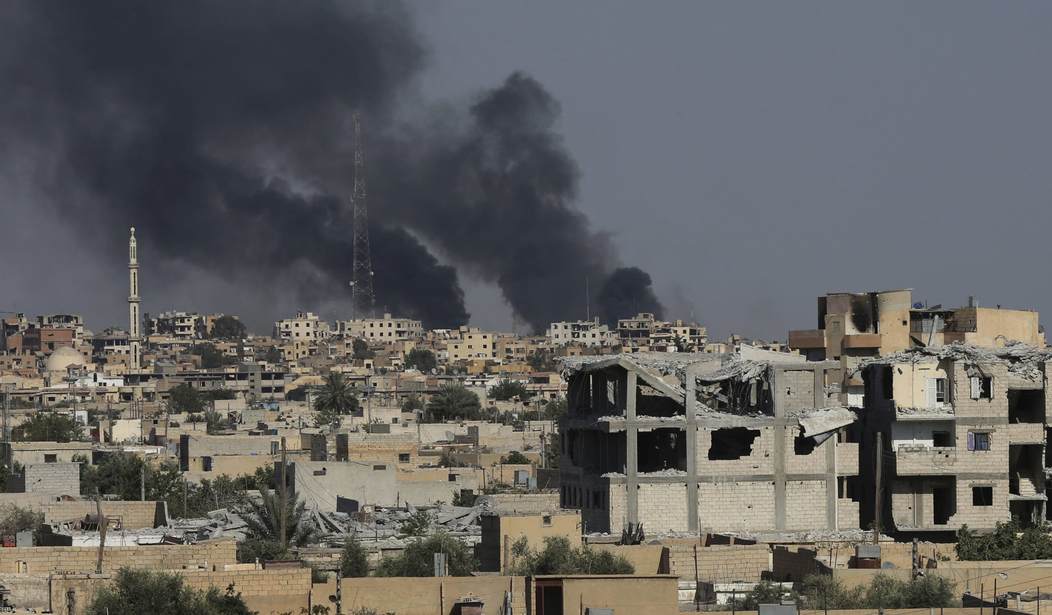ISIS lost 17 of its fighters after what they intended to be a fiery attack on the Syrian Democratic Forces came back to bite them, a Syrian news agency reported today.
Qasioun News reported that ISIS fighters were moving a powerful car bomb toward an SDF position on the outskirts of the Hisham bin Abdul Malik neighborhood of Raqqa when the anti-ISIS forces targeted and blew up the weaponized vehicle. That was followed by “violent clashes between the two sides, along with artillery and missile shelling, resulting in eliminating a number of ISIS troops between dead and wounded, according to media sources close to SDF.”
Outnumbered and outgunned, ISIS has been relying on tactics such as snipers, booby traps and IEDs to try to slow down the SDF advance. The multi-ethnic, multi-sectarian alliance began the Wrath of Euphrates operation advancing toward ISIS’ declared capital Raqqa in November, and entered the city in June.
The 50,000-strong SDF now controls about 55 percent of the city.
Soon after entering Raqqa, the SDF discovered a factory, previously used to make plastics, used by ISIS to construct vehicle-borne IEDs. They seized a massive quantity of TNT and various fertilizers that ISIS used in the explosives.
The SDF have also encountered stiff ISIS resistance in the Shahadeh neighborhood in early week clashes.
Brett McGurk, the Special Presidential Envoy for the Global Coalition to Counter ISIL since 2015, told PBS on Monday that a third of ISIS losses in Iraq and Syria have occurred in the past six months as the SDF advances in Syria and the Iraqi security forces liberated Mosul.
“So, it’s radically shrinking, the people that are under their domain, less and less every day. Our operations enabled by coalition forces, with Iraqi forces doing the fighting, Syrian Democratic Forces doing the fighting, about five million people that used to be living under ISIS are no longer living under ISIS,” McGurk said. “And, more importantly, if you think about where we were back in 2014, the refugee and migrant flow, remember the hundreds of thousands of people fleeing out of Iraq and Syria, we have actually now reversed that. So, in Iraq, two million Iraqis are now back in their homes in areas that used to be controlled by ISIS.”
“And even in Syria now, the first six months of this year, we have actually seen, according to UN statistics, Syrians beginning to return to their homes. That’s a remarkable trend line that we want to continue.”
About 300,000 Syrians have been displaced by the Raqqa fighting, he said, and all have fled north into SDF-controlled territory. Before they can return, streets will have to be cleared of mines and buildings swept for booby-traps. The SDF already has a representative city council in place to restore Raqqa’s basic services and guide infrastructure repair.
McGurk noted that Turkey, which refers to Kurdish fighters in the coalition as terrorists, did not want the U.S. to support the SDF, but instead wanted to see 20,000 to 30,000 American troops on the ground to defeat ISIS.
“We have disagreements with the Turks. We have disagreements with a lot of our coalition partners,” he said. “But as with any endeavor, not everybody sees eye to eye all the time, which is why we continue to work through very difficult issues.”









Join the conversation as a VIP Member